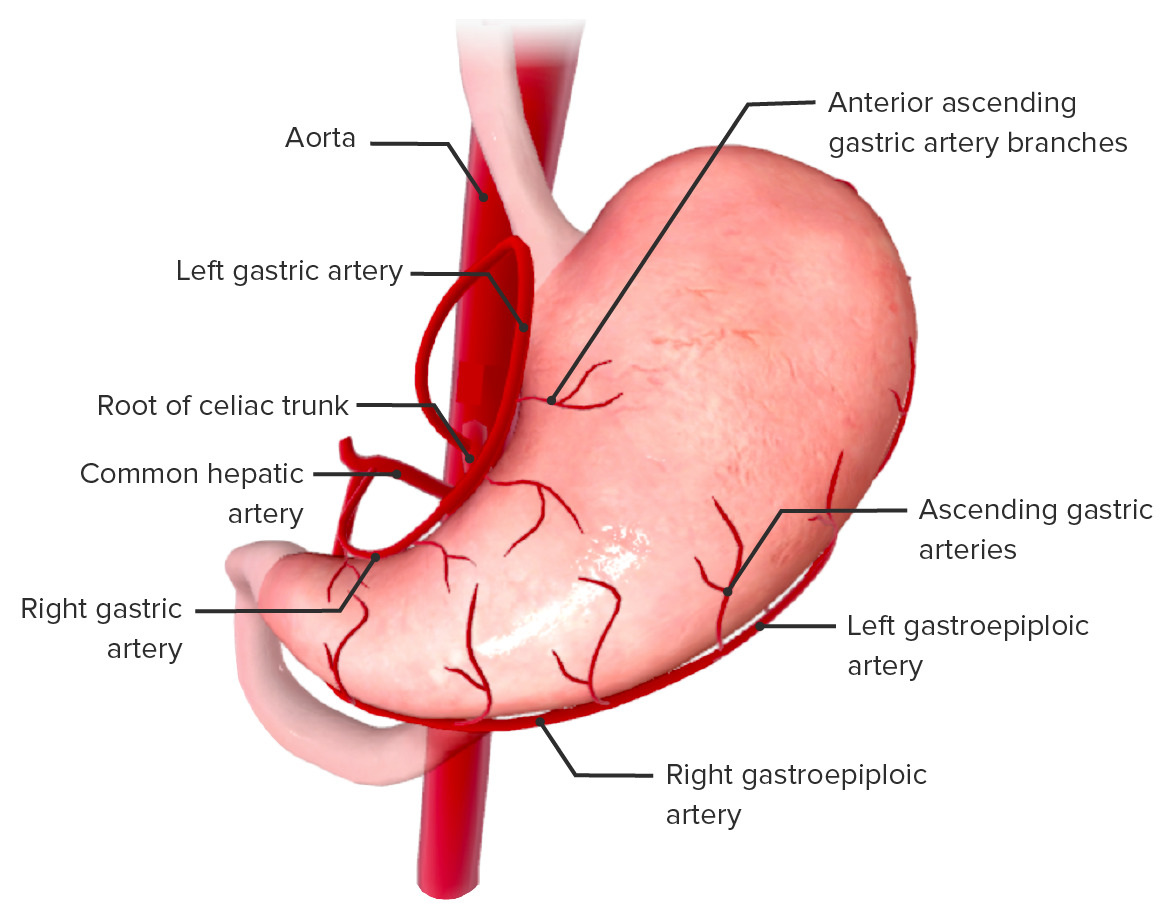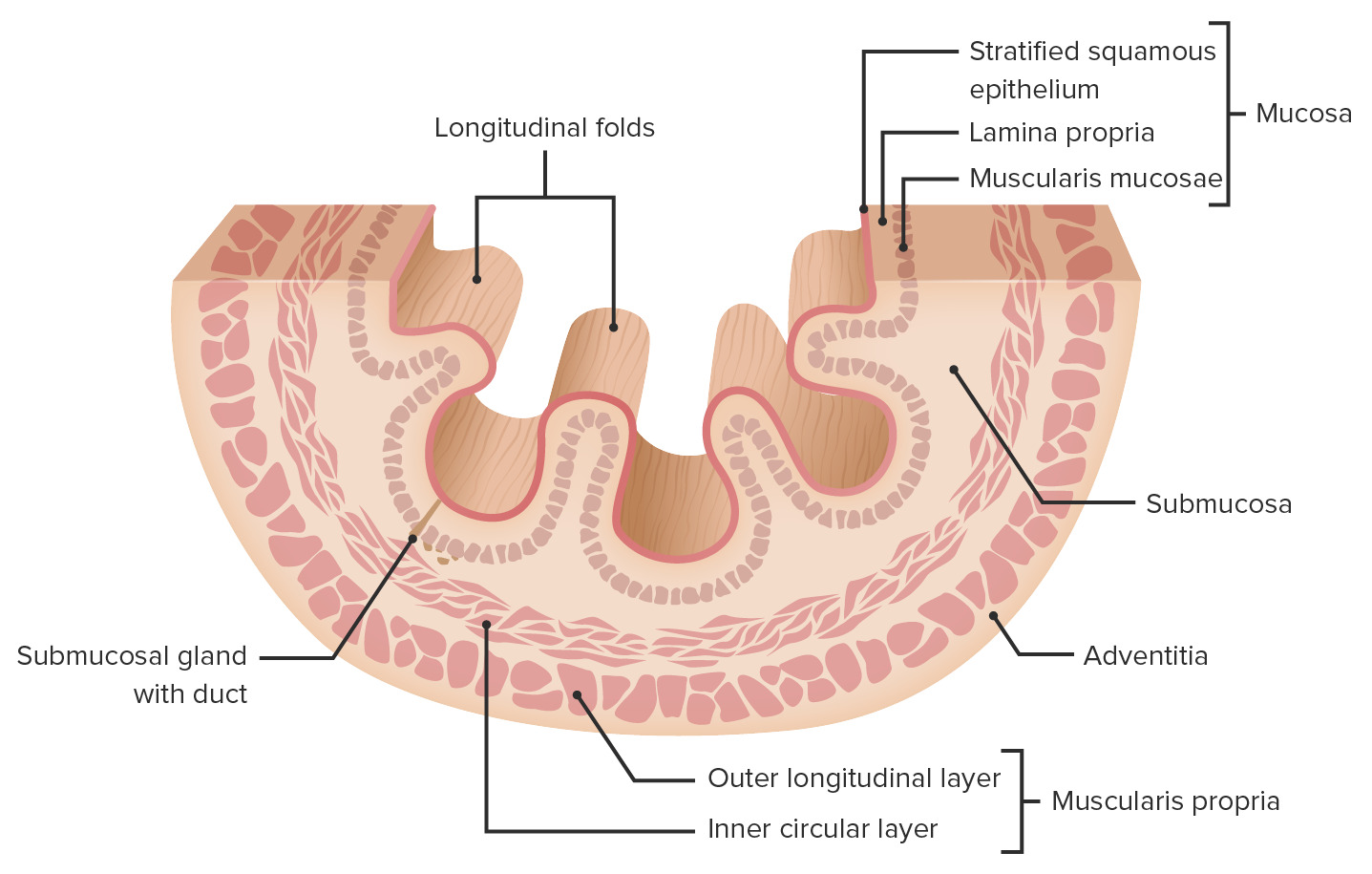Playlist
Show Playlist
Hide Playlist
Anatomy of the Digestive System: Overview
-
Slides Anatomy of the Digestive System Overview.pdf
-
Download Lecture Overview
00:01 In this topic, we're going to look at the esophagus and the stomach. So let's start off by having a bit of an introduction to the esophagus and stomach. It's part of an overview of the digestive system. So really, the stomach and the esophagus form the early part of the gastrointestinal tract, very much leading in from the mouth, the pharynx, the esophagus, and then down into the stomach. The stomach gives rise to the duodenum, that C-shaped structure that we briefly mentioned before which then gives rise to the small intestines. Now, technically, the duodenum is part of the small intestine but the small intestine as we can see here really includes the jejunum and the ileum. We'll come to that in much more detail later on. But as an introduction, the small intestine then gives rise to the large intestine. 00:49 That is essentially a long tube. 00:53 There's a long tube that passed all the way from the mouth where you ingest food all the way down through to the anus where you'll get rid of the food that you digested and the remnants of it. It's a long specialized tube and we'll talk about some of that specialization later on. Sitting alongside this long tube, the gastrointestinal tract is a whole series of accessory organs of digestion and this will pass various different fluids containing enzymes that help to digest the food you have ingested, taking all of the rich goodness out of it so it can pass into our body leaving behind the remnants of that food which we excrete. It starts up in the oral cavity where we have salivary glands that gives rise to various enzymes that help to start that digestive process. And also we have the tongue so we can enjoy of taste some of those foods that we eat. We then have the liver. We have the gallbladder and biliary duct. We have the pancreas. And we'll talk about these in much more detail later on. But they help to process the ingested food. As we look at the gastrointestinal tract as one long tube, we can actually split it into a couple of regions. The upper gastrointestinal tract really covers the mouth, the pharynx all the way down to the esophagus and in to the stomach and the first bit of the duodenum. That's kind of the upper GI tract. The lower GI tract is really where a lot of the digestion helps to take place. A lot of where the absorption of that nutrients takes place and the stomach after chewing is really part that's responsible for breaking it down into smaller bits so it can then be absorbed. So we have the upper GI tract from the mouth all the down to the stomach and a bit of the duodenum and then the lower GI tract which is all the way down from the duodenum, the jejunum, the ileum, the small intestines, then the large intestine all the way through down to the rectum and the anus.
About the Lecture
The lecture Anatomy of the Digestive System: Overview by James Pickering, PhD is from the course Anatomy of the Esophagus and Stomach.
Included Quiz Questions
What is the average length of the esophagus in an adult human?
- 25 cm
- 10 cm
- 15 cm
- 5 cm
- 35 cm
Customer reviews
5,0 of 5 stars
| 5 Stars |
|
5 |
| 4 Stars |
|
0 |
| 3 Stars |
|
0 |
| 2 Stars |
|
0 |
| 1 Star |
|
0 |





